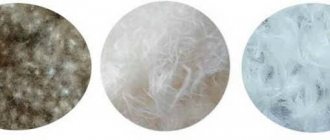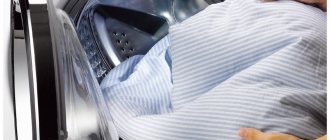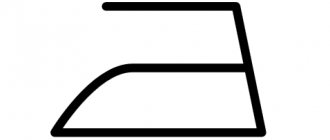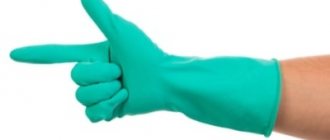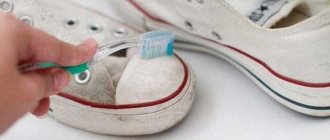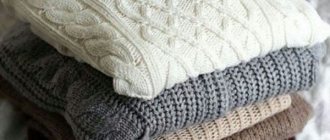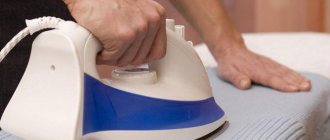What to do if the washing machine stains things or why stains appear on clothes after washing
Washing is designed to make things clean, but sometimes its results are disappointing. The situation when a washing machine stains clothes is familiar to many. You put your clothes or shoes in normal condition, dirty, but without stains, and you pulled out stained shirts, T-shirts, jeans, sneakers or sneakers from the machine.
Experienced housewives can make a whole list of the colors of stains on laundry from a washing machine:
- rusty, brown, red, orange, yellow;
- dark oil, black, gray;
- yellow on white things;
- blue, light blue, violet, gray;
- pink, red, blue, etc. (to match the color of bright washed items);
- bleached spots or white streaks.
There are various reasons why a washing machine gets dirty. And in 70% of cases, according to statistics from the RemBytTech workshop, it is not her fault. Let's figure out why stains appear on clothes or shoes after washing.
Causes of stains after washing
Often the housewife herself forgets iron coins or other things in the pockets of clothes intended for cleaning. Small objects get stuck in the cuff and centrifuge, rust, and during the next wash the machine stains things with brown spots. In such a situation, it is enough to free the drum from foreign objects, clean the filter, and the problem will be solved.
The appearance of stains after washing can occur for the following reasons:
- Worn seal or bearing. Oil seal is a gasket that protects the bearing from water ingress. For better sliding, the oil seal is treated with machine oil. Over time, the gasket wears out, the lubricating fluid penetrates the water and leaves oily gray and yellow stains on clothing. When a machine operates with such a malfunction, noise and grinding noises are heard.
- Dirt in the cuff. If you do not regularly care for your washing machine, dirt accumulates in the rubber cuff located between the body and the drum. During the washing process, plaque particles enter the water and can stain the laundry.
- Mold on the drum and tray. The right environment for mold to form is damp and warm. If, after finishing work, you do not dry the washing machine, but immediately close it tightly, then such a favorable atmosphere is created inside the unit. You can find out about accumulated black mold by the appearance of dark spots on clothing and a characteristic unpleasant odor.
- Rusty water. After repairing the water supply, dirty water with rust comes out of the tap. If the machine runs a cycle on such low-quality water, the washed clothes will be colored with brownish stains.
- Wrong choice of detergent. The quality of the washing powder can be judged by the gray and white spots on clothes. If you come across a fake, it is better to change the detergent. Whitish stains, clearly visible on dark fabrics, may appear due to incorrect dosage of powder and insufficient rinsing. Regular powder cannot be used to wash sportswear made from membrane fabric. There will definitely be white and yellow spots on them.
Some of the reasons discussed are less common, others more common, but all of them lead to the washing machine dirtying the laundry, and this requires a quick solution. Often it is possible to cope with the problem on your own, and only sometimes you have to involve specialists in repairs.
When the washing machine has nothing to do with it
The quality of washing is affected not only by the machine, but also by the powder, its dosage, the selected mode, the weight of the laundry, and its correct sorting before loading into the washing machine. Sometimes housewives are in a hurry or forget how to properly wash certain clothes or shoes. As a result, stains remain on things after washing. We have collected in the table the main types of stains, the reasons why they occur, and ways to eliminate the problems.
| Type of stains | Possible reason | What to do |
| Colored spots on white or light-colored laundry in the shade of some brightly colored items that were washed together with white. For example, pink, red, blue, etc. | Things have faded. Brightly colored fabrics often fade when washed, especially if the water temperature is high. If you put things of different colors together, the light ones may become stained by bright fabrics. Most often, red and blue fabrics stain the “neighbors,” especially if the bright items are new and washed for the first time. For example, new jeans actively leave blue stains on other things after they are washed together. |
| Wash items of the same color or similar shades together. Or put dyed and dark things together that won't stain. If you wash colored items together with light-colored laundry, then choose a program with a temperature no higher than 40°C. | ||
| Rusty, brown, red, orange, yellow stains after washing | Rusty water in pipes. If the water is heavily stained with rust, light-colored items may have yellow-brown stains. Rust appears either in old pipes or after repairs to mains when the water was turned off. When you turn it back on, dark brown water sometimes comes out of the tap, which needs to be drained before using it. If the machine was set to a delayed start and started in such dirty water, then after washing you will find rusty spots on your clothes. | If the problem is regular, then install a filter on the cold water line. In old houses, it is recommended to install two types of filters - coarse and fine filters. |
| Rusty dryer. Stains can appear not only during washing, but also during drying. Especially on things that are laid out to dry. |
The cuff is dirty or there are problems with the seal
Mold in the middle of the washing machine is just a small thing. The reason why a housewife gets her things dirty may also lie in other problems. So, if the washing machine has been improperly cared for (or not cared for at all) throughout the year, a thick layer of gray dirt will accumulate on the cuff and under it. After washing, it will appear as small gray spots on things.
Important ! It often happens that so much dirty plaque has formed that it simply begins to fall out of the cuff in clumps right during washing. Then all this “happiness” will settle on your things. The picture is not the most pleasant.
What to do with such a problem? You just need to take a medium-hard brush (a toothbrush will do), a rag, and start cleaning the cuff of all this “good.” Plaque must be removed wherever possible - from every crack. The main thing is not to overdo it and not harm the cuff.
If after washing you take out items with oil or fuel oil stains, then the problem in 90% of cases lies in the seal. The thing is that when the seals wear out, they begin to throw oil into the water tank, which then ends up on clothes.
In such a situation, you need to act extremely quickly, since when they “die,” the seals will not only stain the fabric, but will also constantly take on a large flow of water. This will lead to corrosion and the bearings will very quickly become unusable.
It may be that you are too late and the bearings have already broken. They will “give” themselves away by creaking and grinding during washing. As in the first and second situations, urgent replacement of oil seals and bearings is necessary.
This procedure is quite complicated and it is best to entrust it to professional craftsmen. Of course, you can try it yourself, but then you will have to do the following:
- Completely disassemble the machine;
- Make a cut using a grinder and remove the tank;
- Carefully remove the failed bearings and install new ones.
The washing machine stains things - reasons that can be eliminated yourself
If after washing dark, gray or black spots appear on the laundry, then the reason may be due to irregular or lack of care of the machine. This results in:
- dirt and mold in the fold of the cuff,
- mold in the powder tray,
- dirt in the pump filter.
Dirty cuff
Dirty water gets into the fold of the rubber part and stagnates. If you do not regularly wipe the cuff dry and close the SM door immediately after removing the laundry, a dirty coating will quickly form on the cuff and mold will begin to grow.
Moldy tray
The detergent receptacle is also constantly in contact with water. If you do not take care of it and the installation site, these parts of the machine will quickly become covered with mold. When washing, dirt and mold get on the clothes in the drum, and stain the laundry with gray or black spots. In addition, clothes begin to smell bad, even when using conditioner.
Dirty filter
Debris, dirt, and mold can grow there. In washing machines with a simple drain pump, a dirty filter causes an unpleasant odor. And in models with a recirculation pump, it is also a source of stains (dirt from the filter gets directly onto the laundry in the tank when the pump is running).
Regular machine care can help you cope with these problems:
- Remove the tray from the machine after each wash, rinse and dry. Also wipe the niche for the tray so that there is no plaque on its walls.
- Wipe the cuff dry after using the machine, and keep the washing door open after washing.
- Clean the pump filter regularly when maintaining your machine. Wash it every time after washing wool and fleecy fabrics. If you wash smooth natural and synthetic fabrics, then it is enough to clean the filter once a month.
- To prevent contamination and remove odors, once every 3-6 months it is recommended to “run” the washing machine without laundry with citric acid at a temperature of 90 degrees, as described in the article on useful tips How to remove musty smell from a washing machine. If you haven't done this in a while, repeat the lemon cleanse twice.
When preventive cleaning does not help and stains on clothes appear again after washing, it means that there is a serious malfunction and the equipment needs to be repaired.
Mold in the powder compartment or pipes
Such phenomena can be found in homes where washing machine maintenance was completely absent or was carried out incorrectly. As a rule, this also happens when a person, after finishing washing, closes the powder compartment and the drum, not allowing them to dry properly.
Mold is a “lover” of dampness and, if you add a warm environment to this factor, you can create almost ideal conditions for it to form a huge amount of black mold, which will begin to release a large number of harmful spores into the air.
Where does mold most often form in the “insides” of a washing machine:
- In the cuvette (compartment) for pouring washing powder;
- In the pipes that lead from the cuvette to the water tank;
- On the walls of the drum;
- On the cuff;
- Inside the water tank.
Anyone with a normal sense of smell will be able to determine the “presence” of mold - its smell will immediately give everything away. Just stick your head into the drum and the pungent “aroma” will immediately hit your nostrils.
This will be the main reason to take a closer look at the remaining components of the stirlak. The procedure is like this:
- Carefully bend the hatch cuff and inspect the cracks;
- Take a look at the walls of the drum;
- Look also in the compartment for filling the detergent;
- Remove the compartment and inspect its opening.
In most cases, you will quickly discover an extremely unpleasant-looking black “cap” that has begun to develop in your machine. And, when clothes come into contact with this mold, they “acquire” dark, smeared dirt.
If this is your situation, it needs to be resolved extremely quickly. To do this, pour 300 g of baking soda into the compartment, turn on the highest temperature setting, and run the machine “idle” with double rinsing.
Such an aggressive “washing” of the machine itself will allow you to forget about the unpleasant problem with mold for a long time. If after the first time it doesn’t work, that’s okay, the process can be repeated until the mold disappears completely.
